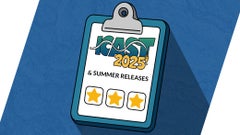Brett Hite Wins FLW Lake Okeechobee
In practice, Hite went immediately to the known community holes on the west side of the lake known as the Monkey Box and Fisheating Bay, and he stayed put. "Those areas have the most vegetation and have a mix of hydrilla and eelgrass," he said. "I told myself going into the tournament that I needed to commit to a certain area. "Last year on the final day of practice, I went in there, but left and I kicked myself the whole time. I knew I had to put my head down and learn the area really well this time." Instead of identifying spots in other portions of the lake, he devoted his entire practice session to the west side. "It's a pretty good-sized area," he said. "I wouldn't call it gigantic, but I spent all 3 practice days in there. I just did what I could to learn as much as I could about it. I identified enough spots in there, too, that I had ample time to run back and forth so if I wanted to make a move, I'd only have to go a quarter-mile. "Most tournaments are won in there and it has the biggest population of fish and the most vegetation. I put all of that into my game plan and decided I wasn't going to leave." He said his biggest bites in practice came punching 1 1/2-ounce weights through the few mats he could find. He also caught some decent fish casting reaction baits on outside grass lines. Ultimately, the casting pattern won out and punching was his fallback option. "It's important down here to have a couple patterns working because things are never the same 2 days in a row in Florida," he said.
Competition:
When Hite arrived at his chosen starting spot on day 1, he found it occupied by a group of shiner fishermen. He did a U-turn, but didn't really have an alternate spot picked out to go to. Once he did settle on a spot, he couldn't keep the big fish off his line as he cleaned up with a ChatterBait and swimjig. "I just started jacking them," he said. The ensuing flurry that lasted until 1 p.m. saw him put four fish weighing 7-05 or more in his livewell, including an 8-02 kicker that ate a Texas-rigged Senko fished slowly on a grass edge. His small fish on day 1 weighed 4-09. He repeatedly looked in his livewell with a sense of disbelief. He backed off the area eventually, thinking there was no use in throwing back 4-pounders he may need to catch later in the event. "It was crazy," he said. "I can understand going to Lake Falcon and having the expectation to catch a bag like that, but here 25 pounds is considered a strong day. I kept looking in the livewell, saying, 'These are some gigantic bass.'" Hite was at the tournament at Lake Toho in 2001 when Dean Rojas weighed in a 45-02 stringer that still stands as the B.A.S.S. record for a five-fish limit. While he fell just short of breaking the FLW single-day mark, he knew things lined up just right for him that day to catch the biggest bag of his tournament career. "I've been around long enough to know it doesn't happen like that all the time," Hite said. Knowing how finicky Florida bass can be with even the slightest change in weather, Hite was fortunate to follow up his massive day-1 catch with a 23-08 bag on day 2 that widened his lead to 12 1/2 pounds over Randall Tharp.
"I started in the same spot from day 1 and caught a decent one - not a giant, but a good fish - and caught a couple more keepers," he said. "Looking back, maybe I stayed a little too long, but I was just wondering if they were still there or if they had moved up." He then shifted to the stretch where he'd caught his biggest fish the previous day. It was a half-mile long hard grass line that had certain key areas along it. "I'd go along for a while and not catch anything, then I'd get to within 20 or 30 yards of my waypoint and catch three or four real quick," he said. "Within a half hour, I had two 7-pounders on a swimjig. When it got to be 11 or so, the lake slicked off and it was high skies that day. Under those conditions, I caught most of my fish on the swimjig. It's more of a finesse scenario when conditions aren't great for a ChatterBait." On Day 3, he caught a decent keeper off his starting spot, but the bite wasn't what it had been. He opted to go to his backup punching spots, a crucial decision that resulted in some key fish that allowed him to maintain a 12-pound cushion entering the final day. "I ran to spots I'd been saving because the bite was better there later in the afternoon," he said. "I had three little keepers and a 3-pounder. We had high skies and no wind and I knew I should've had more bites by then. I had been keeping those spots in my back pocket. "Around 11, I said I'd give myself until 12:30. On stuff like that I like to set a time limit for myself. I figured if I didn't have any bites by noon, I'd go do something else. At 11:45, I was literally lifting my punching rig off a mat and a 4-pounder boiled on it and grabbed my bait."
Winning Pattern:
When Hite won at Lake Toho in 2008, he fished more shoreline-related cover, or "hard lines," as he called them. At Okeechobee last week, he was nowhere near the shore. At times, he was a half-mile from the bank. "It was like structure-fishing grass," he said. "For me, I like fishing a grass edge or a break in the grass. That's how I've fished here the last 4 years. "Sooner or later, it'll hit and the conditions will be right. There was ample hydrilla with no mats and those bigger fish seem to congregate along those edges whether they're spawning, coming in to spawn or post-spawn." Some of the grass he fished was topped off, but other stuff was 1 or 2 feet beneath the surface. He said the fact that shiner fishermen were on his first spot the first couple days didn't bother him. "I always waited for those guys to clear out, but it was like they were feeding the bass and getting them fired up," he said. "It was like they were chumming the water and I'd go in there and clean up on them later."
Winning Gear:
ChatterBait gear: 7'3" medium-heavy EverGreen Heracles Leopard casting rod, Shimano Chronarch Ci4+ casting reel (6.2:1 ratio), 20-pound Sunline Super FC Sniper fluorocarbon line, 3/8-oz. Z-Man ChatterBait Elite (black/blue and green-pumpkin), 4.5" Gary Yamamoto Custom Baits Swimming Senko (black/blue and green-pumpkin). He also used the 4-inch version of the Swimming Senko, but relied more on the larger size because he liked the tail better.
Swimjig gear: 7'1" medium-heavy EverGreen Kaleido Super Stallion casting rod, same reel, 20-pound Sunline Shooter fluorocarbon line, 1/4-oz. unnamed swimjig (green-pumpkin), same trailer (green-pumpkin). Hite called the EverGreen Super Stallion "the most impressive rod he's ever picked up." They're hard to find in the U.S. and will set you back more than $1,000 if you procure one from overseas. He opted for Shooter fluoro because it has less stretch than Sniper and with the thicker swimjig hook, he was able to get better hook penetration.
Senko gear: Same rod as swimjig, Shimano Metanium casting reel (7.4:1 ratio), same line as swimjig, pegged 1/8-oz. Reins Tungsten slip sinker (black), 5/0 Gamakatsu EWG Superline worm hook, 6" Gary Yamamoto Custom Baits Senko (black/blue flake).
Punching gear: 7'7" EverGreen Heracles flipping rod, same reel as Senko, 60-pound Sunline FX2 braided line, 1 1/2-oz. Reins Tungsten slip sinker (black), 5/0 Gamakatsu Heavy Cover worm hook, 4.5" Gary Yamamoto Custom Baits Flappin' Hog (black/blue flake).
Shallow cranking gear: 6'11" medium-heavy EverGreen Heracles casting rod, same reel as ChatterBait, 16-pound Sunline Super FC Sniper fluorocarbon line, EverGreen Combat Crank Shallow 60 (black back/gold sides). He opted for this particular crankbait because it doesn't dive as deep as a squarebill. It fishes like a Mann's Baby-1 Minus, but has a wide wobble and Hite prefers it around shallow grass. He made parallel casts along the grass line to pick up two key keepers on day 2.
Main factor: "Execution was big and so was having all of my spots in one area. That was important being able to fish as much as you can and not have to run around. On Lake Okeechobee, so many people get up with catching them around North Shore or J&S or Kings Bar or South Bay, you can burn a lot of your day running around. My spot, I could see them all from one general area and it was a couple-minute run at the most to get to each one. Being able to rotate through them all was key. It was a big timing deal."
Performance edge: "My MinnKota Talons were huge with fishing that huge outside grass edge. I'd catch one and put the Talons down because as soon as that fish goes in the livewell, I want to be able to make that same cast again whether they're on beds or on that corner feeding. I don't want to get blown around. Also my MinnKota Fortrex 112 was important because on day 3, I had a couple of fish tied up in the grass and that thing just blasts through there."
Lake Okeechobee Winning Pattern Bassfan 2/11/14 (Todd Ceisner)














